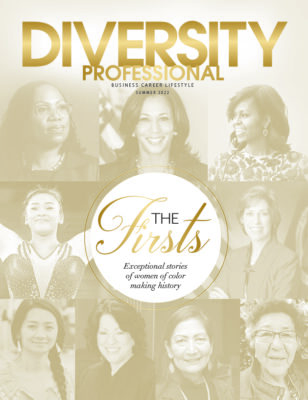Closing A 39-Year Career That Started With “NO”
How Charles Harmon transformed American Honda’s D&I strategy.
It was possibly the most fortuitous rejection Charles Harmon has ever had.
Until his retirement from American Honda Motor Co. in September, Harmon had spent the last 14 years as its corporate procurement director and concurrently the last seven as senior manager of the company’s administration division, which includes functions such as travel, records management and mass mail. But none of the success he earned during his 39-year career would have been possible without that one “no.”
It was 1983. Harmon was a temporary employee managing a 200,000-square-foot warehouse that American Honda had acquired to store motorcycles, pre-production automobiles, computer technology and advertising collateral. Having recently left California State University, Fullerton because he couldn’t get the classes required to graduate, Harmon needed a permanent full-time position. He launched his job search with a formal resignation letter to his department manager. As quickly as it was rejected, it was followed by a full-time job offer as a facility maintenance supervisor.
“We’re now looking at ourselves internally with a focus on cultural transformation and issues like unconscious bias, whether our organization and executive leadership reflect the demographics of our customers, particularly in terms of gender, and how we can better engage our associates in helping make Honda a company that society wants to exist.”
When Torrance, California-based American Honda centralized its operations in 1986, Harmon, then only 24 years old, assumed management responsibility for all eight company facilities in the United States. That was followed by a transfer to the facilities planning group where he oversaw a $65 million budget for construction of eight new facilities, including Honda Aircraft Company’s Greensborough, North Carolina headquarters. In 2006, Harmon was named head of American Honda’s purchasing group.
“When I had responsibility for construction, I was probably the purchasing department’s worst nightmare,” admitted Harmon, who later earned a bachelor’s degree in business and management from the University of Phoenix. “But I had to get buildings built on time and under a tight timeline that was tied directly to the company’s North America growth strategy.”
In 2007, Harmon was given additional duties managing the company’s supply chain and its then newly-launched diversity and inclusion (D&I) initiative.
“It’s about ensuring that everyone’s included in the discussion, that everyone has an opportunity, and that everyone has a fair and equitable advantage.”
“Because I headed purchasing, it was easier for me to make that transition than some of my counterparts at other organizations where the ‘inclusion’ function was separate from purchasing,” he explains. “Since I had oversight for both, I could make award decisions on the spot.” That agility has played a key role in driving American Honda’s supplier diversity effort.
Before 2007, the company did not track its diverse supplier purchasing. Documenting that spend has become a key performance measure. American Honda alone now represents $1 billion of the $4 billion that Honda’s U.S. sales, distribution, manufacturing and research and development operating units collectively purchase every year from minority-owned businesses.

While Harmon shares a background similar to that of other supplier diversity professionals—he grew up in the inner-city communities of Watts and Compton in south-central Los Angeles—his family history adds a unique dimension to that experience. His wife is bicultural and his extended family is multicultural, with members hailing from Russia and South America. It explains why Harmon has advocated that D&I needs to “lose the D.”
“As the multicultural landscape grows, it’s less about diversity because the issue of race is going to become diluted,” explains Harmon. “The affirmative action steps that President Richard Nixon took in the late ‘60s don’t play in today’s environment. We need to change the script because today it’s about inclusion. It’s about ensuring that everyone’s included in the discussion, that everyone has an opportunity, and that everyone has a fair and equitable advantage.”
The tumult of the civil rights movement surrounded Harmon as a young boy growing up in the 1960s and 1970s. He’s seen a handful of iterations since then. The question now is: What’s next when it comes to changing the script?
“We feel we’ve done a good job diversifying our supply chain. We’re now looking at ourselves internally with a focus on cultural transformation and issues like unconscious bias, whether our organization and executive leadership reflect the demographics of our customers, particularly in terms of gender, and how we can better engage our associates in helping make Honda a company that society wants to exist.”
But those are issues for the next generation of American Honda employees to address. Whittling down a lengthy “honey do” list and perhaps volunteering with selective nonprofit organizations are what will occupy Harmon’s immediate future. As he leaves behind a stellar career, there is one thing he will carry forward.
“When I started working here, it was a small company that no one paid attention to,” says Harmon. “We had only about 500 employees and we were a close-knit group. We knew each other by name and we knew each other’s families. It was just like what our 1960s ads used to say: ‘You meet the nicest people on a Honda.’”









